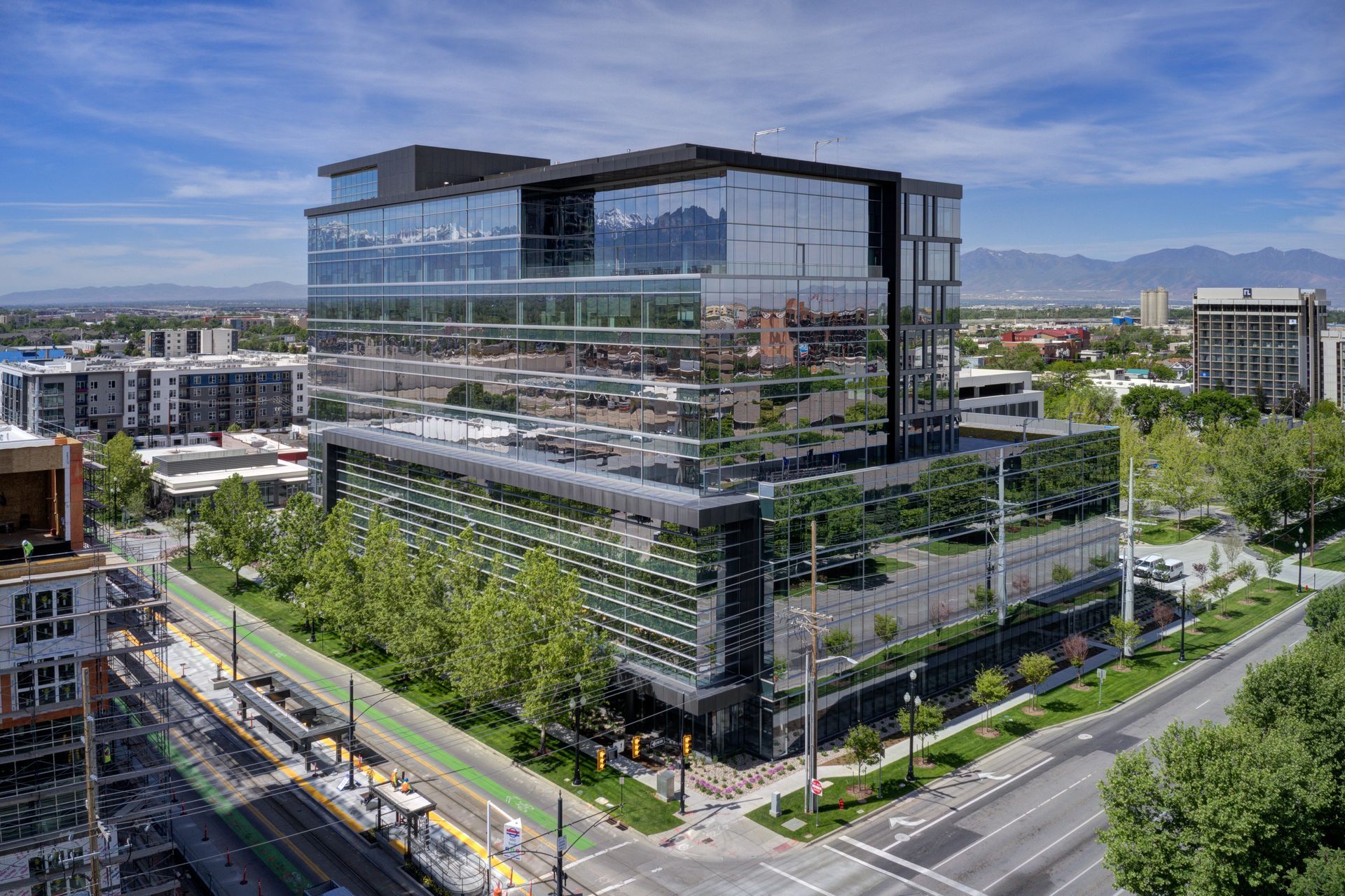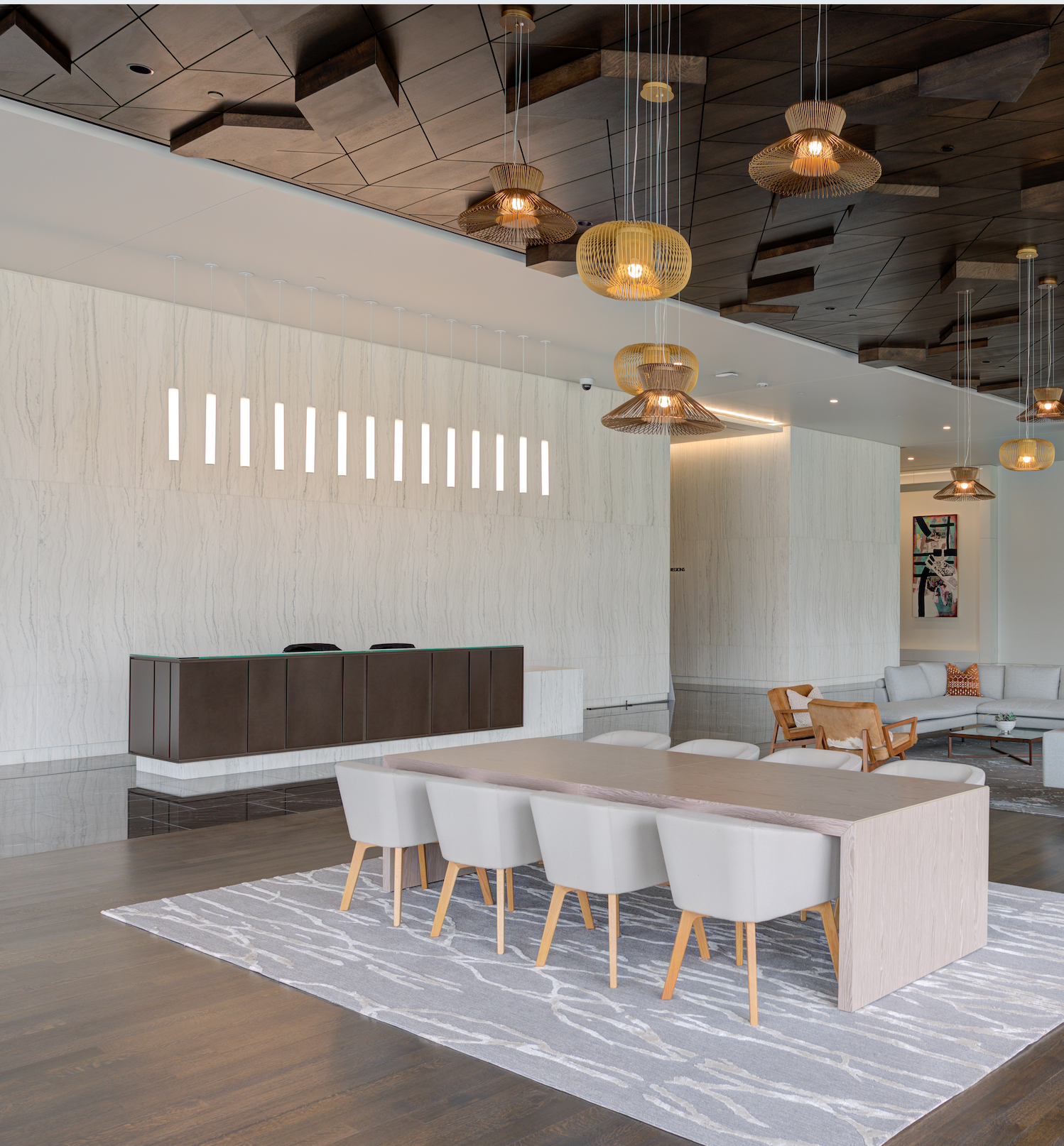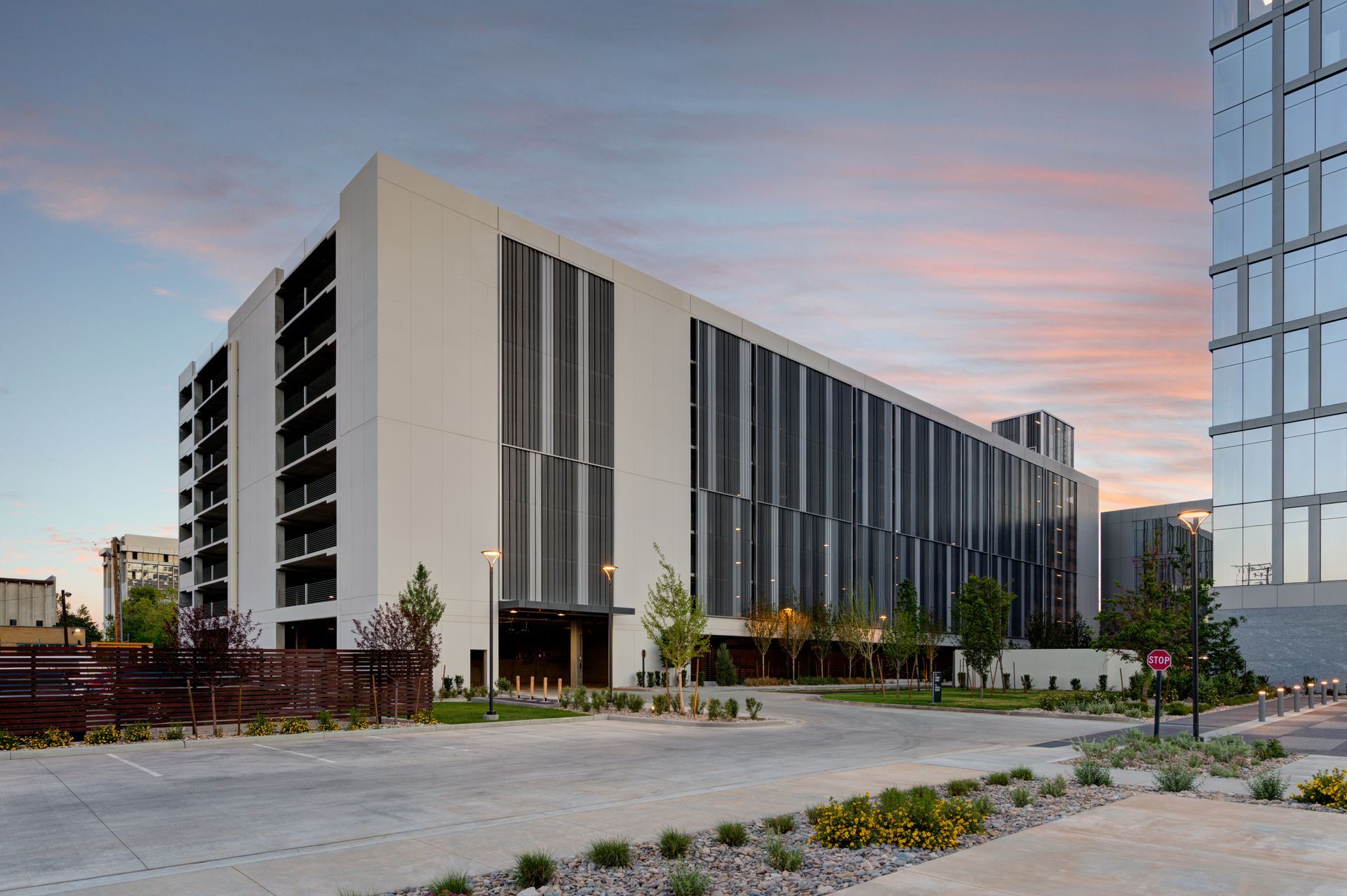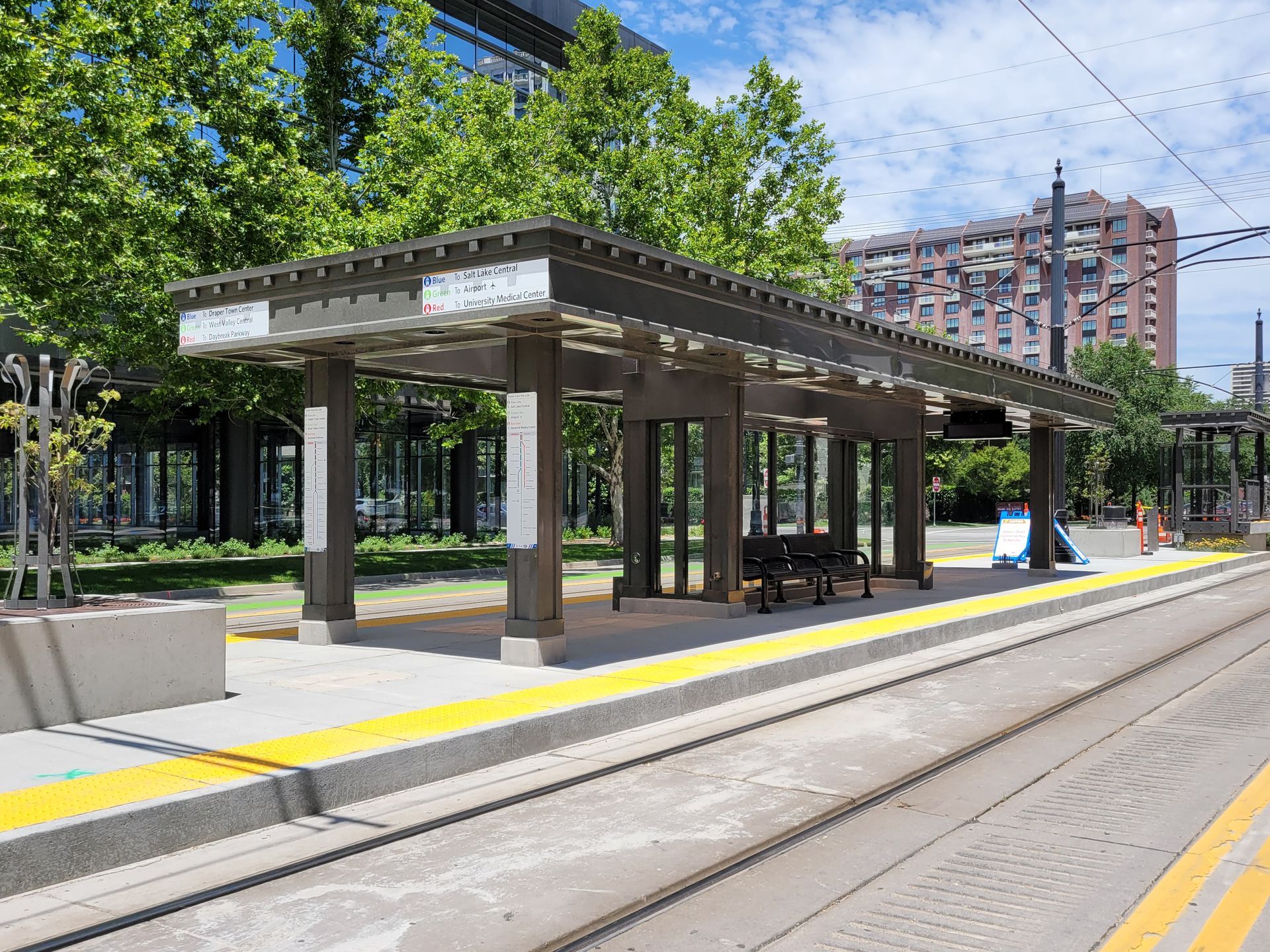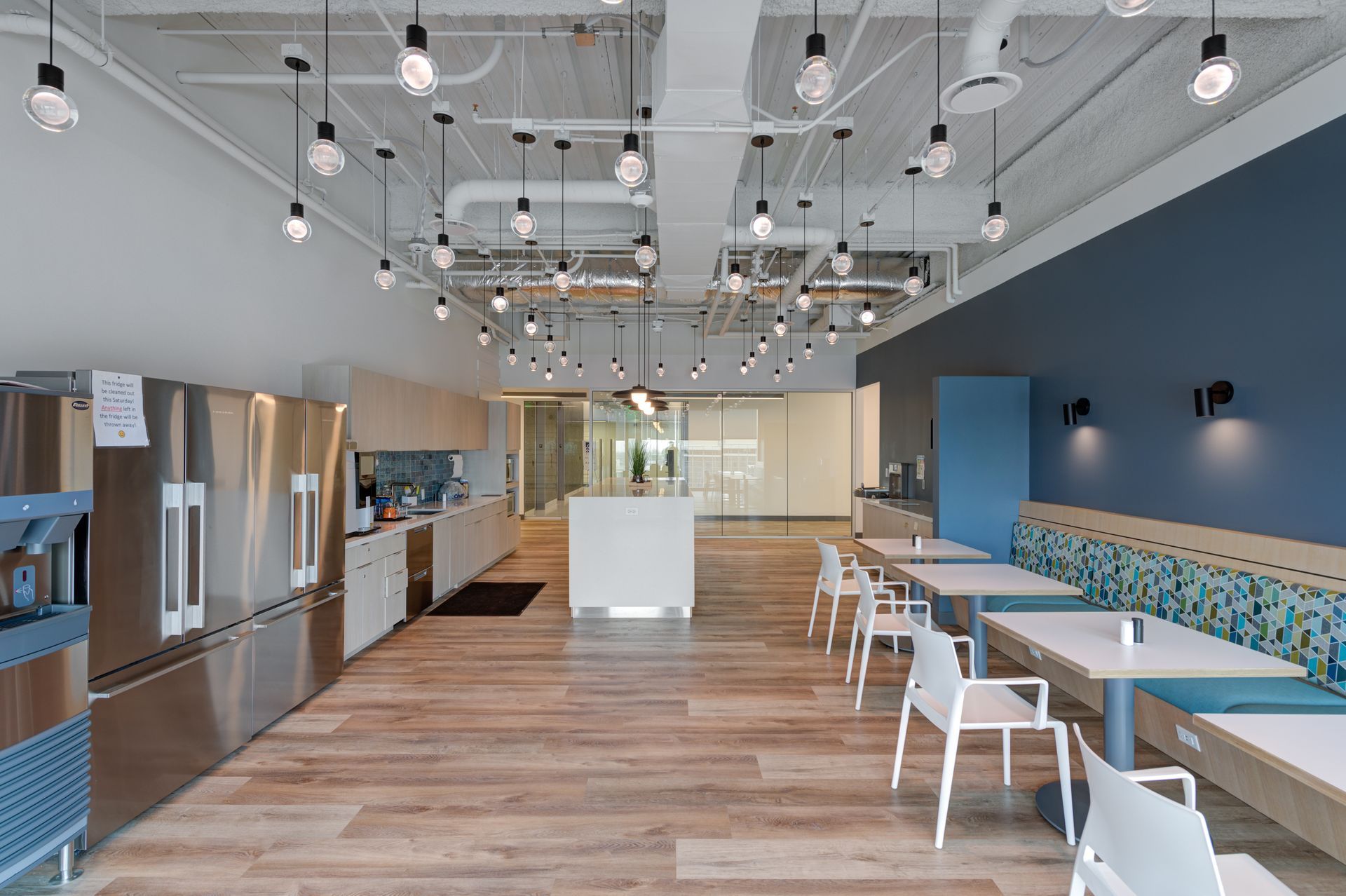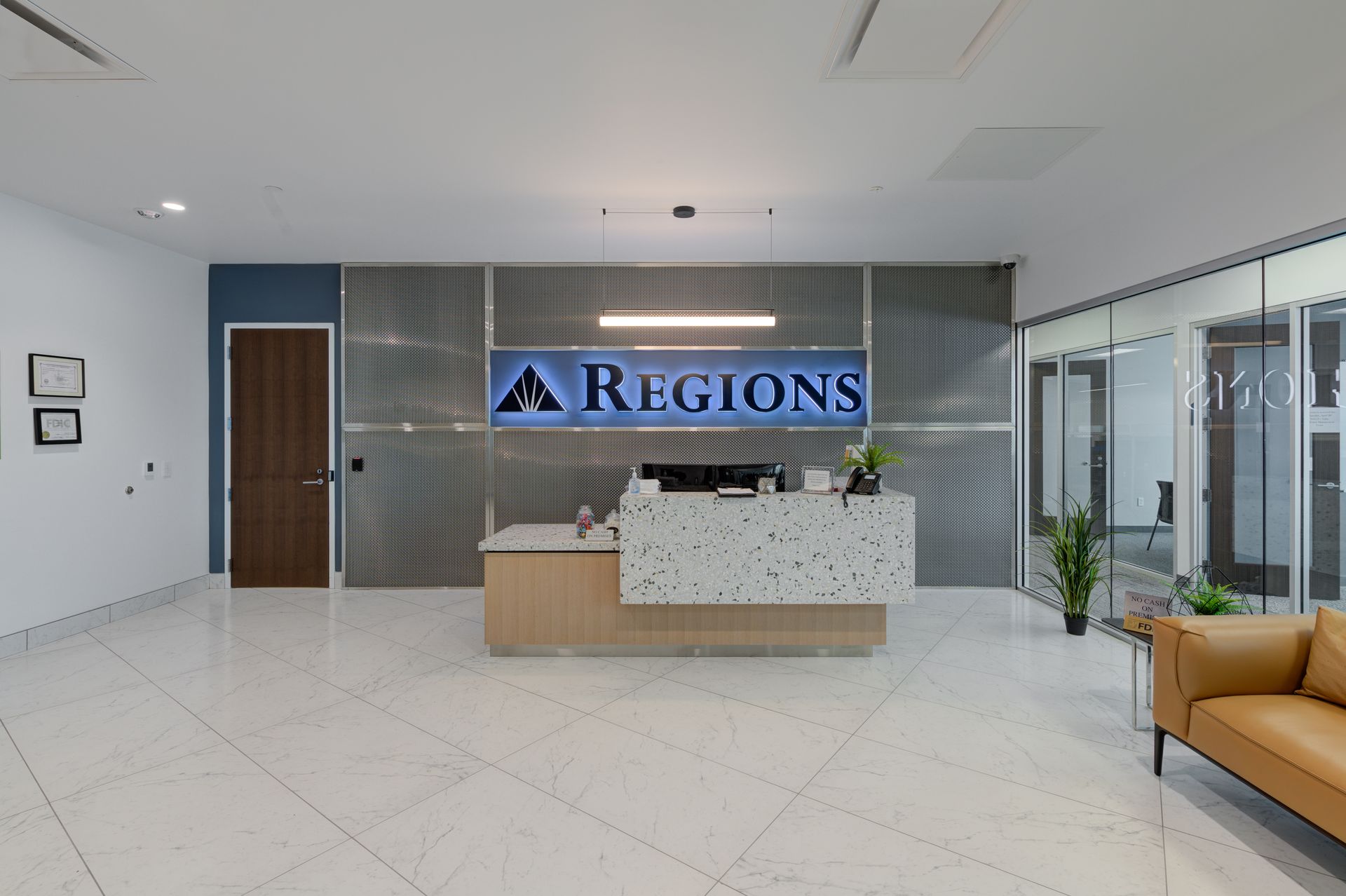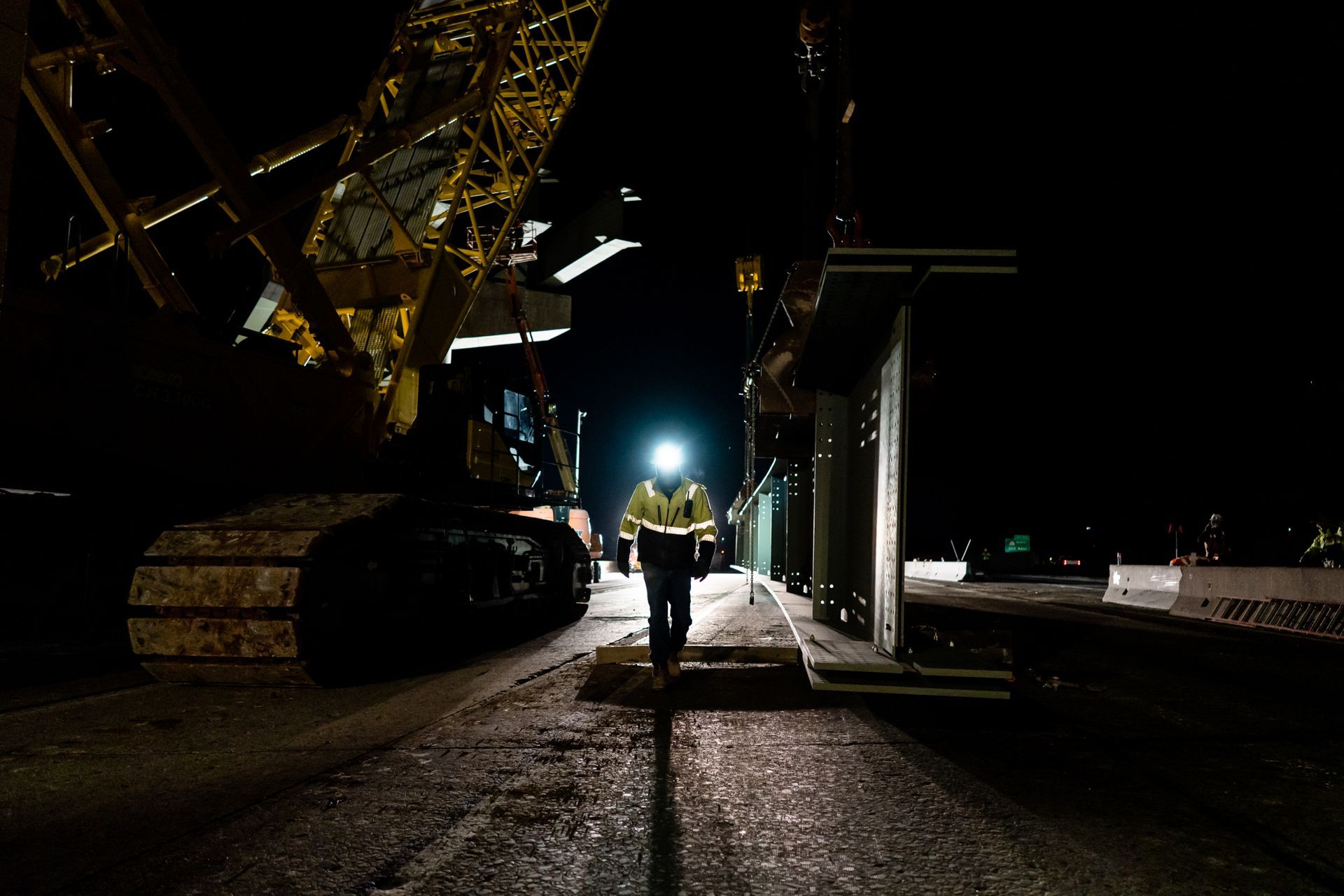Weaving in New Fabric
Salt Lake City continues to grow up as well as out with 650 Main’s 10-story office tower and adjoining parking garage. By Taylor Larsen
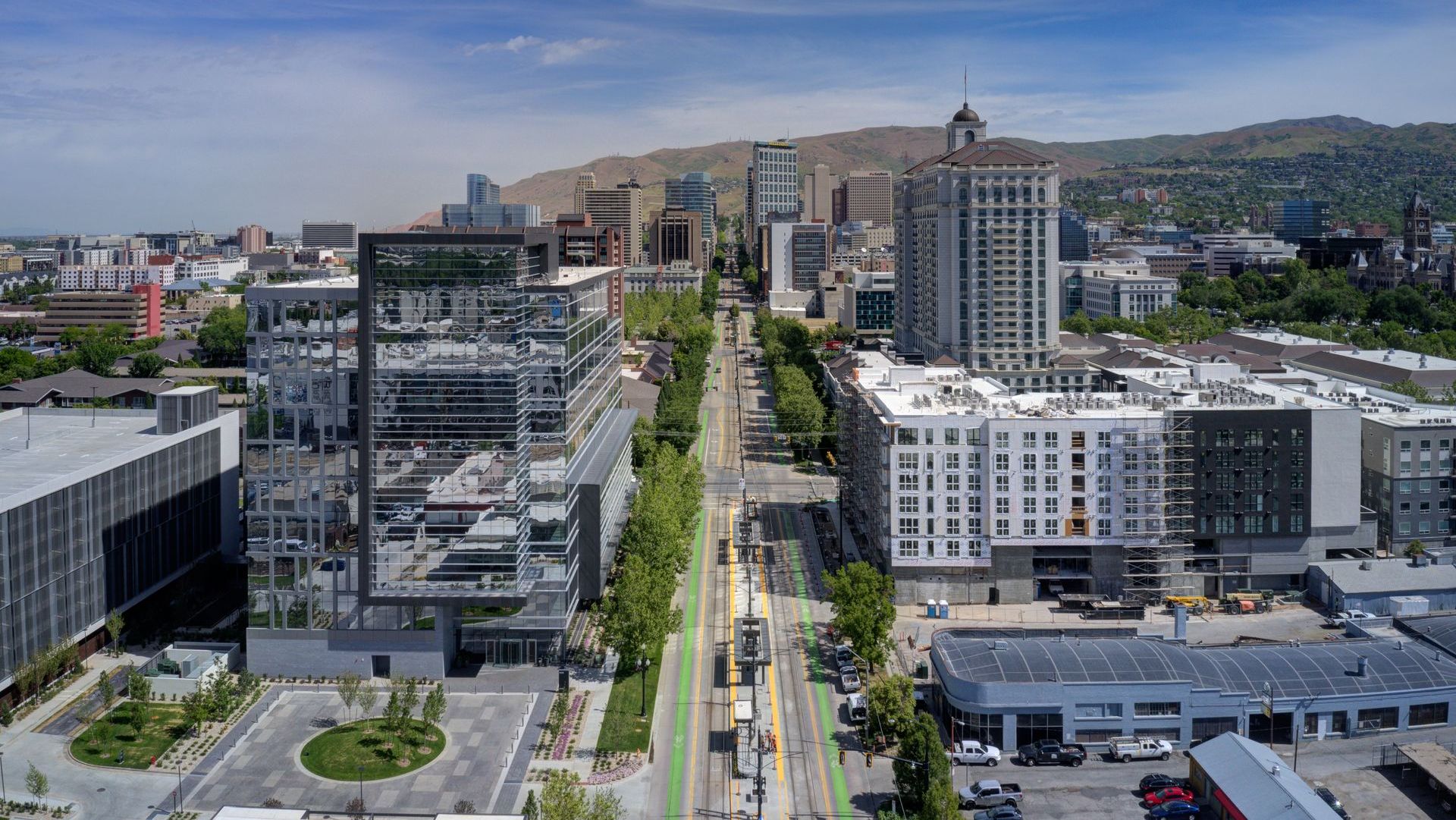
Location, location, location.
The cliche from real estate folks is true for a reason. The hustle and bustle of urban areas are where people want to be, and the newest office building to open, 650 Main, is no exception.
Forward thinking from Dennis Tarro, Executive Vice President of Houston-based developers Patrinely Group, and his team helped bring the building to life as the real estate pros looked for emerging office markets and felt like they could add something of beauty and purpose to Salt Lake’s growing south side.
With its site between 600 South and 700 South on the multi-modal Main Street, it’s just a few blocks from all three of Salt Lake’s biggest east–west vehicle connectors to I-15. That ease of access was a major selling point to Patrinely Group, especially combined with the city and state’s other amenities.
“Salt Lake City checks a lot of boxes,” he said. Whether it is the outdoor-centric and accessible lifestyle, the international airport and the Beehive State’s high quality highways, or the affordability compared to other markets, Tarro and others felt like this would be a spot where Patrinely Group could not only succeed, but create a foothold for future development and be an integral part of building up an area of an ascendent city.
To create that foothold, Roger Soto, Design Principal for HOK’s Houston office, said that 650 Main needed to be a good urban neighbor that respected the existing downtown fabric while creating a desirable, walkable, office campus that is accessible to public transit. Accessibility grew as a group of developers near the 650 Main site, including Patrinely Group, ponied up the funds necessary to bring a TRAX Station within a minute walk from the front door.
But everything has its costs beyond dollars and cents. Jeff Peterson, Vice President of Layton Construction, said staging space was at a premium. The TRAX station in the works occupied one of the sides of the construction zone while Layton and the construction teams erected 650 Main and its parking garage simultaneously. Add in “that we were [building] next to 600 South, one of the busiest streets in Salt Lake,” and the tight construction site meant their logistics work as a general contractor had to be precise.
He said that crane time was also at a premium, but one tower crane would not be enough to get the job done, and there was not enough space to fit a second tower crane. Instead, “we did it with two mobile cranes, squeezed in-between the office building and parking garage,” he said. To mitigate the potential issues from the hundreds of thousands of pounds of force exerted from the cranes, Peterson said that “a four-foot-thick base course pad made sure that the cranes were safe to operate” in a space that, today, is the office building’s lovely courtyard.
Communication between the crane operators was critical to make sure they were not picking over top of each other while ensuring everything was getting delivered and installed on time for the office building and 976-stall concrete parking garage.
“Cranes are a key part of our industry but can be dangerous if not used properly,” said Peterson. Construction crews came together for a job site huddle every morning to go over daily activities, especially crane picks, and make sure no one was working under the crane’s route.
It required another level of coordination, as the Layton team needed to be on top of material deliveries so the cranes could be most useful. Peterson mentioned that they resorted to an old school method. “We put a scheduling board in the trailer for when [crews] needed the crane,” Peterson said of the logistical success of the project. “We would referee when there was a conflict, but it worked pretty well.”
As the steel frame of the building completed, in came the glazing.
“We wanted to maximize glass,” said Bob Carnegie, Director of Architecture for HOK and Design Architect on the project. He said they worked with structural engineers to push the columns out and create cantilevers to clear the glass of any columns on this core and shell office. Floor to ceiling glass looking east to the Wasatch Mountains connects the building to Utah’s geographic majesty. Views from each of the 10 floors provide the visual connection to both the mountains and daylight—amenities that make Salt Lake and Utah so special.
Back on the ground level, the office building creates a “street wall” that engages with the street via floor to ceiling glass near 600 South's sidewalks. Soto and Carnegie explained how the building then steps back into a more standard office floor plate from the podium, a deliberate choice to respect the streets and the neighborhood, provide something architecturally compelling to energize the area, and ultimately fulfill their mission of being a good urban neighbor. Add in the nearby 4,000-plus-SF retail building that will be leased by Mexican restaurant Sol Agave, and you have a fully accessible office campus that can bring people onsite all day.
Soto described the area and the building as “fabric in the making.” And this fabric strand is modern. Metal panels function as if they were glazed into the curtain wall via the frame, even though the bent aluminum panels stick out in a non-continuous pattern.
“We worked closely with the [glazing subcontractor] JR Butler on the panels and glass to create different textures,” said Peterson of the work with their trade partner on glazing needs. Unitized and pre-fabricated panels help the façade to function as one continuous waterproofing system. Beyond utility, these framed views give tenants a lovely sight looking west.
Soto complimented how Layton suggested “a [façade] product that would fit perfectly with our goals.” Modern, efficient, fresh, forward-looking. “This is what tenants look for,” he continued.
The project’s efficiency resulted in LEED GOLD for the core and shell with high-efficiency glass and effective heating and cooling systems. Peterson said that Layton was able to recycle over 90% of their construction waste to bring another sustainability win to the project.
He was complimentary of developer Patrinely Group for their landscaping choices that will “add to the community and help with the beauty of the building.” From a bird’s eye view on the top floor, all of the new plants in their neat little rows make it seem like an entire nursery was placed on the site.
“We wanted to feel like the building and occupants weren’t sealed off from nature,” said Soto. They accomplished that via a terrace on the first setback from the ground floor plane and another terrace at the top corner of the building. The biophilic link is a unique and meaningful component of sustainability as the building creates engagement with the natural world.
But if you want engaging, stroll through the lobby. The 15-foot ceilings there make for a spacious and inviting entryway to the 300,000-SF office. Soto mentioned the hospitality feel designed for the lobby—with high-end furniture, lofty ceilings, and views outdoors, the space is certainly engaging, but the material choices really bring the energy. Marble flooring from Afghanistan, marble wall tile from Vermont, floor to ceiling glass, and courtesan oak wood veneer from Texas all combine to form a first-rate lobby for the post-Covid office.
“Developers have really changed their opinion on what a lobby should be,” said Soto. Gone are the days of ceremonial places of sheer elegance meant to be hallways to a company’s actual office. In its place are comfortable, usable spaces that combine with the utility of the provided amenities.
The lobby is a feature piece, but the fully stocked fitness center can stand alongside as a top building amenity. It links to the outdoors via a glass curtain Panda Horizontal Sliding Wall—a hybrid feature sure to turn heads. Add those to the courtyard at ground level, terraces above, and even full conference rooms, and it seems fair to ask whether the amenities arms race real. “Absolutely,” said Tarro. In order to get people back to work, Tarro mentioned, “you have to check all of those boxes.”
Doing so is akin to adding stitches in the fabric; the fabric of this building is strong. At every level of the project, the project team is sure that they have built something that combines well with the city’s downtown evolution.
Tarro said that office space is poised for a rebound, with tenants unsure what their space needs look like in a post-Covid office environment. He and Patrinely Group are confident that future tenants will fall in love with higher floor plates, higher ceilings, and top-shelf amenities. He explained how “[Patrinely Group] wanted to check the boxes” for clients looking to make the move to Utah’s emerging office market.
“I’m confident that this building offers what tenants want today,” said Soto. It weaves together location, building quality, and amenities into one inviting campus. It will be a strength to Salt Lake as the downtown extends southward.
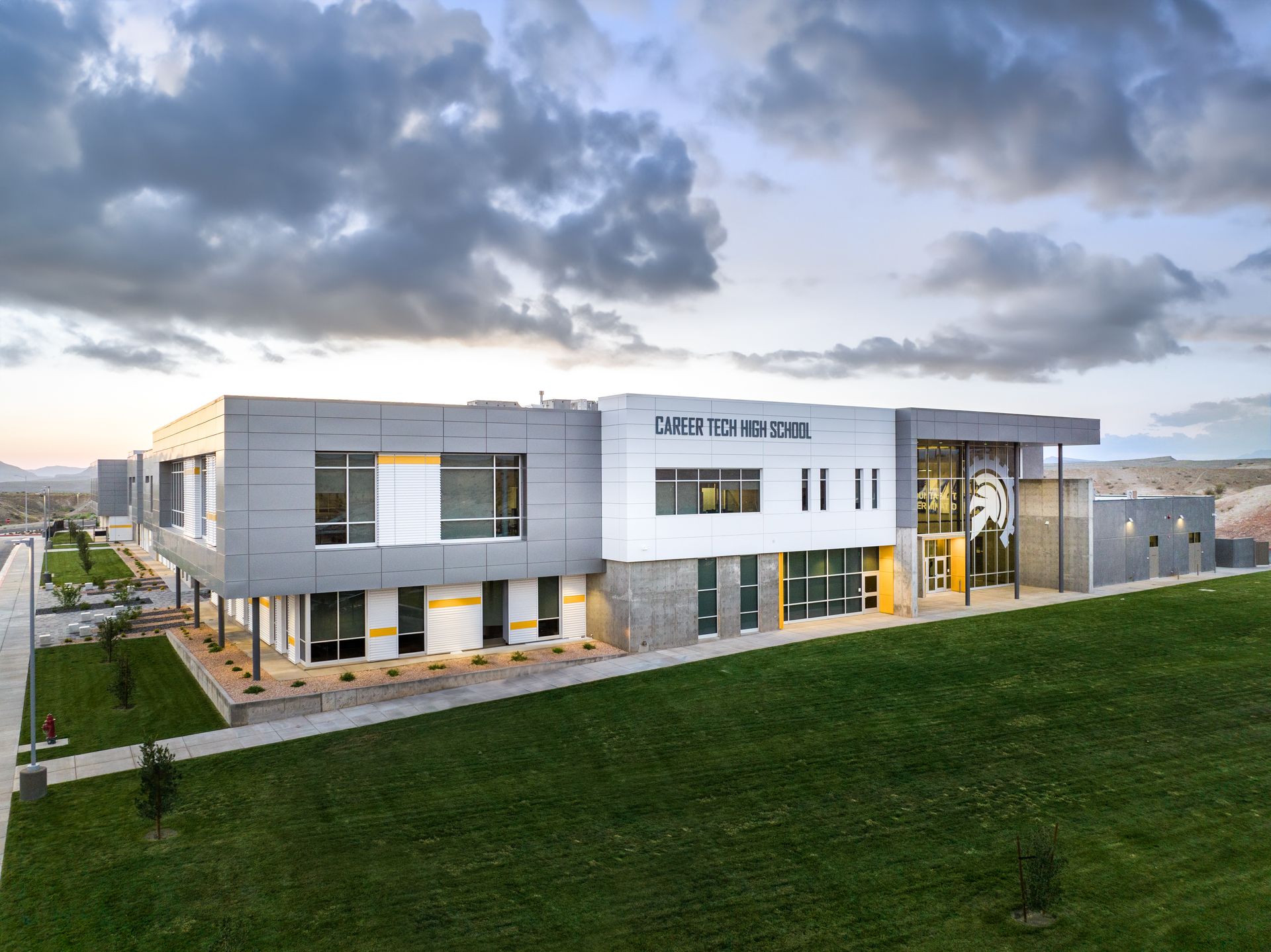
It's not every day that an architect designs a project around a native flower, then again, the new Career and Technical Education (CTE) High School in St. George is far from your standard K-12 school. "Essentially, we patterned the floor plan around the Bear Claw Poppy," said Bryan Dyer, Director of Facilities for Washington County School District (WCSD), and one of the primary designers of CTE from 2018-20 while at St. George-based NWL Architects prior to joining the District. "The courtyard is the center of the poppy; the rooms represent flower petals. I think it turned out nice—the courtyard is heavily used and is a unique part of the project. The school board tasked us to do something unique to the District—it's the only building of its kind in the state where students have educational and vocational all in one." "It was kind of a philosophical departure for the District—they recognized the need to pick up the students that fall into a category of not being traditional students—they wanted something different and arrived at the need for a career and technical emphasis," added Terrance White, Principal-in-Charge for NWL. As the first standalone career and technical education facility in Utah, the revolutionary $29.6 million, 126,000 SF school offers eight pathways for the nearly 500 students enrolled at the school (capacity is 800), including: business, construction, culinary arts, engineering, education, graphic design, health science, and information technology. The two-level design prioritizes functionality, creating a dynamic environment where students can explore their chosen fields with purpose and passion. WCSD officials and architects from NWL were inspired by similar CTE schools they toured in Houston and Las Vegas and were able to successfully translate the vision inspired by those schools into a tangible space that fosters true collaboration between students and sets a new standard for a career-focused educational platform. "We toured a school in Houston [...] and recognized the architecture of that building took on more of a junior college feel—it felt like it was something more than a high school but not quite a university," said White. "It's great to see a school district recognize where they can take better care of their students."

It's been more than three decades—1993, to be exact—since the non-profit U.S. Green Building Council (USGBC) was co-founded by S. Richard (Rick) Fedrizzi, David Gottfried, and Michael Italiano, which ultimately spawned the revolutionary Leadership in Energy and Environmental Design (LEED) in 1998, a points-based rating system that offered legitimate third-party verification of green buildings. The goal of the fledgling association was simple: Increase overall sustainability of new construction projects including improved energy efficiency and creating a better, healthier environment for building occupants—all with the goal of reducing construction's carbon footprint. At the time, it was considered a bold initiative, with significant potential real-world benefits to the A/E/C industry. It took several years for the LEED initiative to get off the ground, but by the turn of the 21st Century, the phenomenon started taking root in the design community. "When LEED began in the late 90s/early 2000s, it was an incredible ambition to transform the building industry and to bring sustainability into the conversation," said Whitney Ward, Principal with Salt Lake-based VCBO Architecture and one of the firm's leading sustainable design experts. "[USGBC] had some big hurdles to overcome, including a general lack of knowledge about or mistrust of global warming and climate change." Ward said the U.S. Green Building Council and the LEED rating system had an immediate and profound effect on: —Creating more transparency in material manufacturing and getting manufacturers to care more about developing more sustainable/greener materials (carpet, flooring, paint, textiles, etc.) —Highlighting the true value of sustainable buildings through "incredible marketing efforts" and spurring owner demand. —Becoming the "go-to" third party certification agency for sustainable buildings. "The environmental consciousness of designers, builders, and owners [...] has really evolved to (where we say) 'we're going to do the best we can'," said Ward. "LEED has been an incredible tool in reshaping the industry and helping manufacturers, contractors, architects, and other industry partners understand the impact that their decisions have on the environment and on energy use," said Peter McBride, Principal with Salt Lake-based Architectural Nexus. "The conversation 20-30 years ago used to be 'how much does this cost?' or 'what is the percent increase cost in doing (LEED) vs. the baseline?' As each version of LEED established itself as an industry standard, the answer has been that LEED Certified or LEED Silver costs no more—or slightly more—than a baseline design. With each subsequent version release, LEED continues to push the boundary—sustainable design is now the baseline." "LEED has increased awareness for sustainability and energy conservation in buildings," added Chris Cox, Building Performance Program Manager for the State of Utah Division of Facilities Construction and Management (DFCM). "As far as the biggest pro, LEED brought the integrated design process to the forefront—user groups, owners, maintenance teams, architects, engineers, and builders work together in achieving the best outcomes."
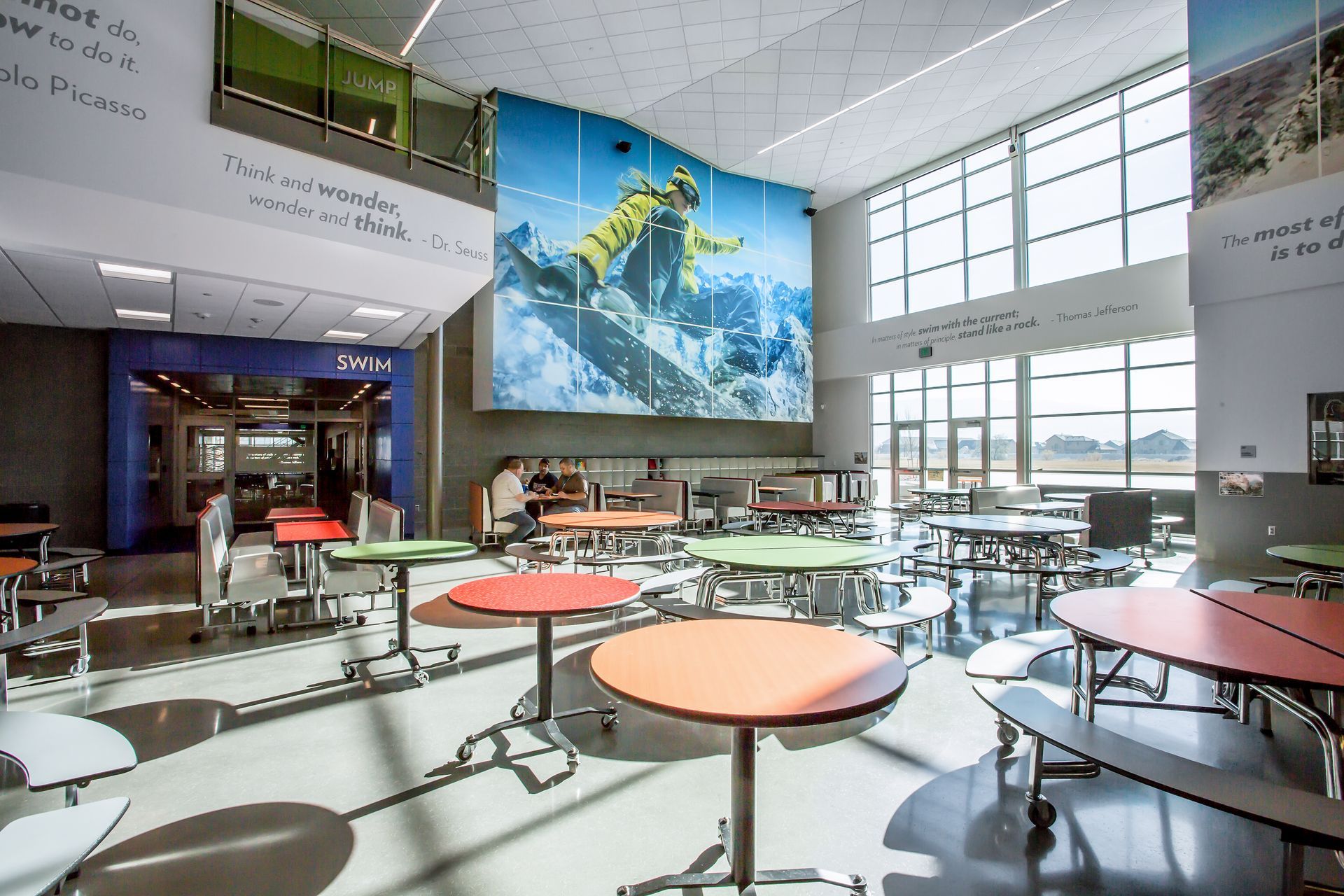
UC+D: How was it working with Gary Payne for so many years? Turner: His impact on the Davis School District will last many years due to the buildings that were constructed during his time. Rather than being satisfied with the status quo, we worked to develop school buildings that would accommodate innovate teaching styles and would be safe, economical, and exciting places where children would want to be. UC+D : It's been 10 years since Odyssey Elementary was completed. What is the analysis of how it has performed? Turner: It is not very hard to create a truly Net-Zero building. We can produce enough electricity to offset the electricity used, plus the natural gas usage—however, the power company will not give us credit for electricity generated above what we use. An energy model was used to estimate the Energy Use Index (EUI) of Odyssey Elementary. It predicted that our EUI would be 22. The first year it was actually 17. An ideal Net-Zero building would not have any natural gas usage. We elected to install a gas boiler in the building to help control the "demand" charges that would occur on cold days when all the heat pumps would start up in the building. For 2023, the PV array produced 213,066 kWh; we used 188,088 kWh in electricity. We used 421 decatherms of gas, giving us a cost of $0.33/sf for energy usage, compared to an average building in the district (about $1.25/sf). UC+D: What is the greatest success with Odyssey? What would you do differently? Turner: Odyssey Elementary, with all its energy-efficient features, provides an excellent educational experience that benefits both teachers and students. The building accommodates different learning styles, collaboration, and individual exploration. First and foremost, the building is a school, albeit one that is very maintainable. There is not anything I would do differently. Since this was the first of a series of prototypes, a lot of thought from a lot of people was put into it.

Before the Logan Library ribbon-cutting ceremony began, two children eagerly ran past the staff toward the children's section. Inside the children's area, two girls, with their arms linked, skipped past the shelves of books while a little boy raced along the cobblestone path that weaves through the bookshelves. A young girl in the reading nook called her mom over to see, and a little girl with pigtails used the miniature-sized door into the children's section to enter the playhouse. The ribbon-cutting began in the lobby and adjacent community room, which were filled with patrons of all ages despite the stormy weather outside. As they entered, a string quartet greeted people with lovely music, and cameras lined the walls for press coverage; even the local firefighters came to show their support. Before the library's opening, Mayor Holly Daines shared how the facility was designed and built with modern and historical intentions. The mayor and various library donors spoke excitedly about the new library before the giant scissors were used to cut the ribbon. Immediately after, patrons with arms full of books were perusing the bookshelves. Children read in the aisle, too excited to move to a table, while parents formed a line waiting to check out books for the family. Quiet laughter emanated from the "teen and tween" section, and Utah State University and the Logan Latter-day Saint Temple are visible from the third-floor windows. From 1985 to 2021, the previous library was in an old and converted Sears building. For the last 20 years, Logan City leaders have discussed providing residents with a modern library. "The library was old and dark, and the systems were failing. It never was a purpose-built library," said Daines.
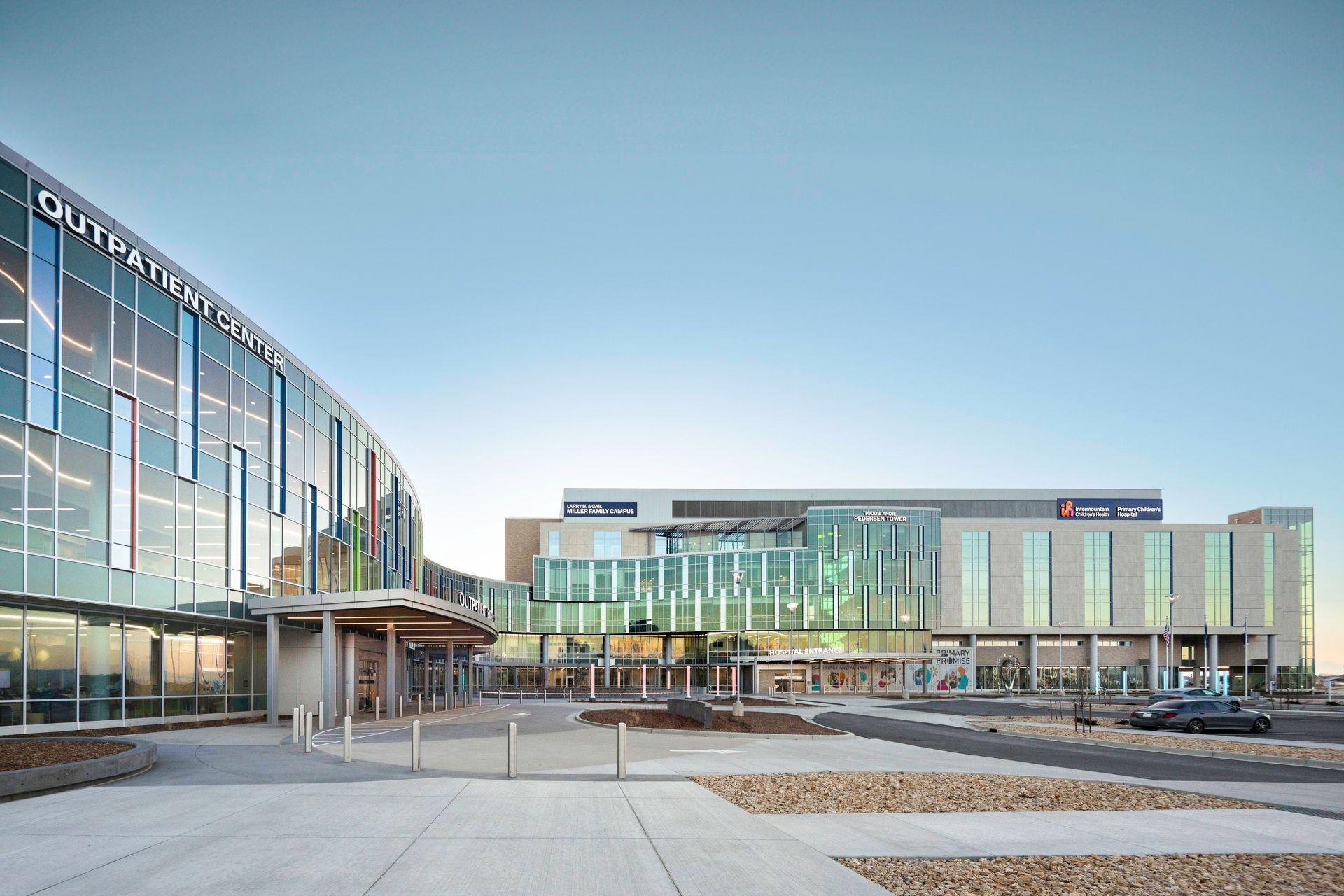
Since its inception more than a century ago in 1922, Primary Children's Hospital has set a standard for pediatric healthcare excellence by continuing to produce world-class facilities throughout the Beehive State. The latest cutting-edge offering is the Intermountain Primary Children's Hospital, Larry H. & Gail Miller Family Campus in Lehi (PCH Lehi), a project of significant importance to this burgeoning city, one that ranks among Utah's fastest-growing communities. Aided by a $50 million gift from the Miller Family Foundation, this landmark five-story, 486,000 SF, 66-bed project features the latest and greatest in medical technology in a building that is fun, playful, and energetic, with colorful design elements playing a vital aesthetic role throughout. The value of a project on this level is beyond measure, said Blake Court, Vice President of Salt Lake-based Jacobsen Construction. "Primary Children's really has a special place in my heart—they are a very special entity," said Court, a veteran healthcare professional with nearly 35 years of overall experience, including 19 years at Jacobsen along with stints at the State of Utah Division of Facilities Construction and Management and the Department of Veteran's Affairs. "It has been embraced by the community. Lehi and the surrounding areas are growing so fast. It's just amazing to see what's going on there." "It's a once-in-a-lifetime project," said Jeff Pinegar, Principal with Salt Lake-based VCBO Architecture, who partnered with Page Southerland Page of Houston on an exhaustive 19-month detailed planning and design process to create a comprehensive hospital and clinic in one congruous structure. "To see these kids have the spirit they have [...] it's a life-changing project. I'm so glad I had the chance to be part of it. I love the challenge of healthcare." As with most construction projects that originated during the pandemic, PCH Lehi kicked off in August 2020, which proved immensely challenging from the onset in regard to worker health and volatility of material cost and availability. "Everyone knows the story—people got sick, it spread to co-workers, and we would lose entire crews [of subcontractors]," said Court. "We would constantly be down manpower. And then [material] lead times just skyrocketed. Materials that we normally get off the shelf went to a year-and-a-half overnight because manufacturing plants were shutting down. Add in price escalations and it was just a trifecta."

At an age when most folks are kicking off their post-retirement "golden years", 66-year-old Cal Wadsworth is attacking this chapter of his life with the zest of a man reborn, having fired back up his general contractor firm in 2020 with a vision of eventually turning it over to the next generation. It speaks to his resolve as a businessman and construction lifer, as a parent who wants to do right by his children, but even more as a person who has rallied/is rallying back from a challenging period personally, which coincided with the great recession and led to him shuttering Cal Wadsworth Construction in 2010. "I'm realizing more with time that I'm not in control as much I thought," said Wadsworth. "There is the realization that you've got to give up control. You can't base all your happiness on the money that comes from this business. Learning to live with disappointments is something I'm getting better at. Learning to live with them and not let them ruin my confidence, or my ambition. I live by the 'Serenity Prayer'."
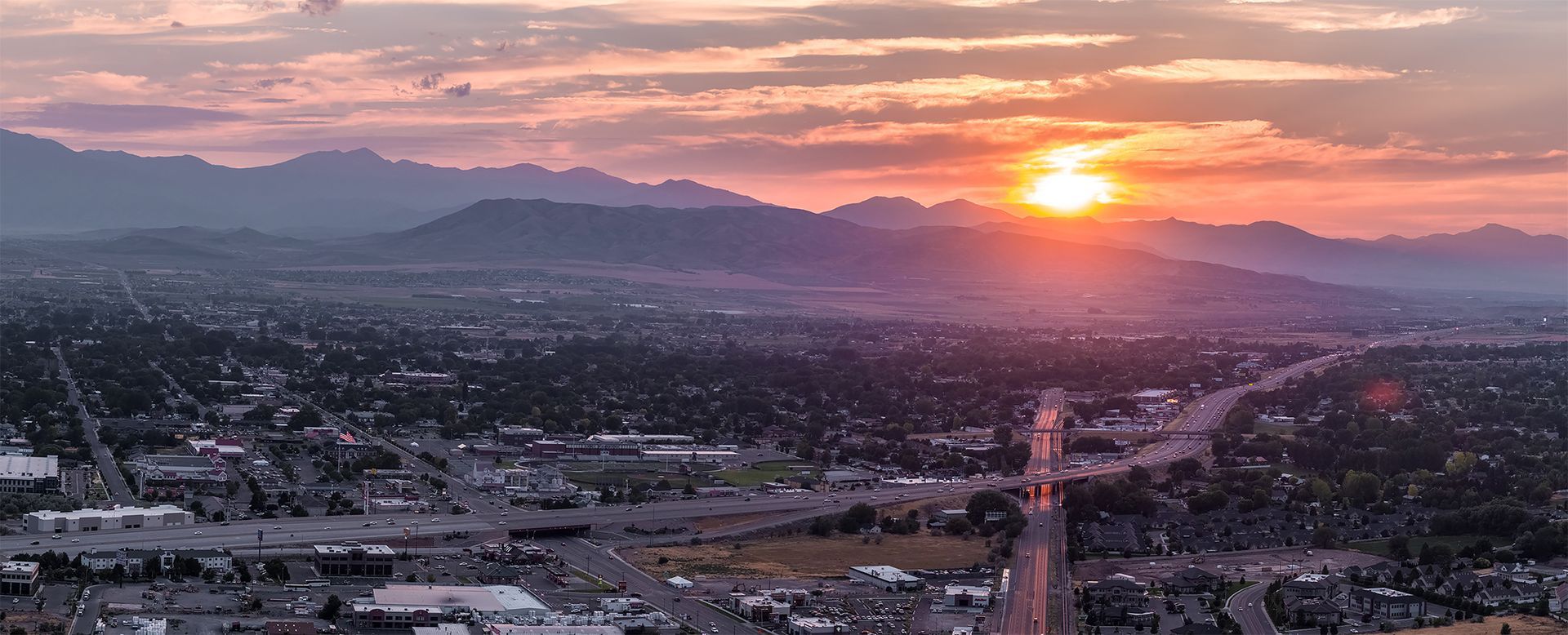
Adobe’s 680,000 SF Lehi Campus is an iconic project in Lehi that was completed in two phases, with the first phase opening at the beginning of 2013 and signaling a new era of development along the Silicon Slopes corridor. (photo by Dana Sohm) Inset: Aerial view showing an illustration of Texas Instruments’ new 300 mm semiconductor wafer manufacturing plant—referred to as “LFAB2”—which broke ground last November and marks the single largest investment (over $11 billion) in state history. (photo courtesy Texas Instruments)

Work continues to grind forward on the mammoth new Salt Lake City Water Reclamation Facility (WRF)—a critical $850 million project being built by a joint venture of the Salt Lake regional offices of Sundt Construction and PCL Construction that will replace the current facility in North Salt Lake once it's turned over to SLC's Department of Utilities (SLCDPU) in July 2026. As it stands, this is the second-largest project in City history, trailing only the recent $2 billion-plus Salt Lake International Airport Redevelopment (Phases 3-4 ongoing), and one of the most technically challenging projects in the state. "We are up for the challenge every day—the magnitude of this thing is unreal," said Manny Diaz, Project Manager for Salt Lake-based Sundt, as he drove around the massive 30-acre site in late-January, a worksite teeming with 300 current employees (it will peak at 400 workers this summer) and myriad complicated structures being built simultaneously. Diaz is a long-time veteran of the water reclamation facility industry—this project marks plant No. 26 in his own personal history—and he was brought in a year ago by Sundt because of his expertise. When he arrived in Salt Lake at the beginning of last year, it was right smack dab in the middle of what proved to be a record-breaking year for snowfall. "It was quite a welcome to Utah!" Diaz chuckled. "We keep very close tabs on the weather." And while crews haven't been subjected to the same inclement weather this winter, site conditions are still generally wet and muddy, and the difficulties associated with building the various structures are constant. Crews are nearing the halfway mark, so certainly it's a milestone worth acknowledging, even though a mountain of construction is still left to climb. "It's such a huge accomplishment to be this far," said Jason Brown, Deputy Director of Public Utilities for SLC. "We've faced a lot of challenges, Covid, material shortages [...] it's amazing to be part of a team that works so well together. We still have a long way to go, but we'll get there. We've made a lot of progress and should be proud, but it's hard to celebrate success with so much work still ahead." Diaz, along with PCL Project Manager Shayne Waldron, said crews recently achieved a major milestone: one million hours worked, a notable accomplishment. “Achieving the ‘one million hours worked’ milestone is a testament to the coordination and collaboration required of a project this size," said Brown, adding that the new WRF project benefits from regular and ongoing staff collaboration, under the watch of Sundt/PCL, designers AECOM and Jacobs, and SLCDPU leadership. “This [milestone] is the culmination of many different efforts,” added Mauricio Ramos, District Manager for PCL’s Civil Infrastructure Division. “From local engineers to pipe layers, journeymen, construction trade workers, foremen, and general laborers, every team member has been instrumental in reaching this benchmark. The collaboration between PCL and Sundt has been a testament to our shared commitment to excellence and innovation.” "Our crews are working together seamlessly to ensure that the final product meets the goals and needs of the community," said Sam Reidy, Senior VP and District Manager for Sundt. "Celebrating this milestone recognizes the hard work and commitment each member of the project team has made to this project and the Sundt/PCL partnership." Diaz and Waldron said soil conditions challenged the team right out of the gate and took significant time to stabilize the site. "At the very beginning, the project was designed to be built on top of where the sludge beds were at, but it turns out the sludge beds were on shaky ground," said Diaz. "This whole area is young in age, so it's all soft clays and sands," added Waldron. "Soft clays are compressible, so the big issue is settling. It would have [cost] $80 million in piles to shore it up, and then in between buildings you have all the pipe and utility duct banks, so they would almost need to be built on piles." Waldron said the idea came up to pre-load the whole site, where crews built a flat pad, installed wick drains, then pre-loaded 30 ft. of dirt, with drains going down 125 feet and providing a way for water to be pushed out of the clay. "We had over seven feet of settlement," said Waldron. Crews also set up sophisticated monitoring equipment "to see where ground was settling and what layers were compressing the most. It was really scientific—a lot more than I've seen before." Diaz said it took six months to haul in the fill dirt where it remained in place for eight months, then took another six months to excavate out—close to one million yards of total material. It was an exhaustive process, with an average of 400 trucks per day and close to 500 trucks hauling 18,000 tons on the best day. Having a cohesive, highly collaborative team of designers and construction experts has been a boon to the project schedule. Once completed, Salt Lake City’s new WRF will serve over 200,000 residents as well as those who commute downtown to work or visit Utah's capital. It will replace the City’s current—and only—wastewater treatment facility, which is over 55 years old and near the end of its service life. Maintaining reliable operations at the existing facility while constructing the new WRF nearby has been critical for the project’s success. Since breaking ground in 2019, the project team has completed approximately 65% of structural concrete work as well as soil mitigation, deep foundation work, and the installation of underground utilities. In late January crews began excavating dual 63-in. diameter pipelines, along with a 78-in. effluent pipe that is being hauled one giant piece at a time from Canada, a new type of corrugated HDPE with welded joints that should provide greater durability. All in all, crews will ultimately pour 93,000 CY of concrete and install 22 million pounds of reinforcing steel, along with 89,000 LF of underground pipe ranging in diameter from 1.5-in. to 78-in. "The camaraderie among the team members allows for a very cohesive team," said Diaz. "The only way you can tell who works for who is by the color of the truck. We have a 'one project' mentality. The complexity of the job and being trusted to lead this effort [...] have been [important] for me. It's been a great job so far." Diaz, who said his first wastewater treatment plant was in North Miami Beach in the late 80s right after he graduated from college, hopes to remain in Utah once this job is completed and turned over to the client by mid-2026. “I plan on staying here and continue to work on treatment plants in Utah,” he said. “There’s a lot of work here. We have vast experience, and we have a lot of people who want to be in Utah—it’s a great place to live. Let’s do it!”
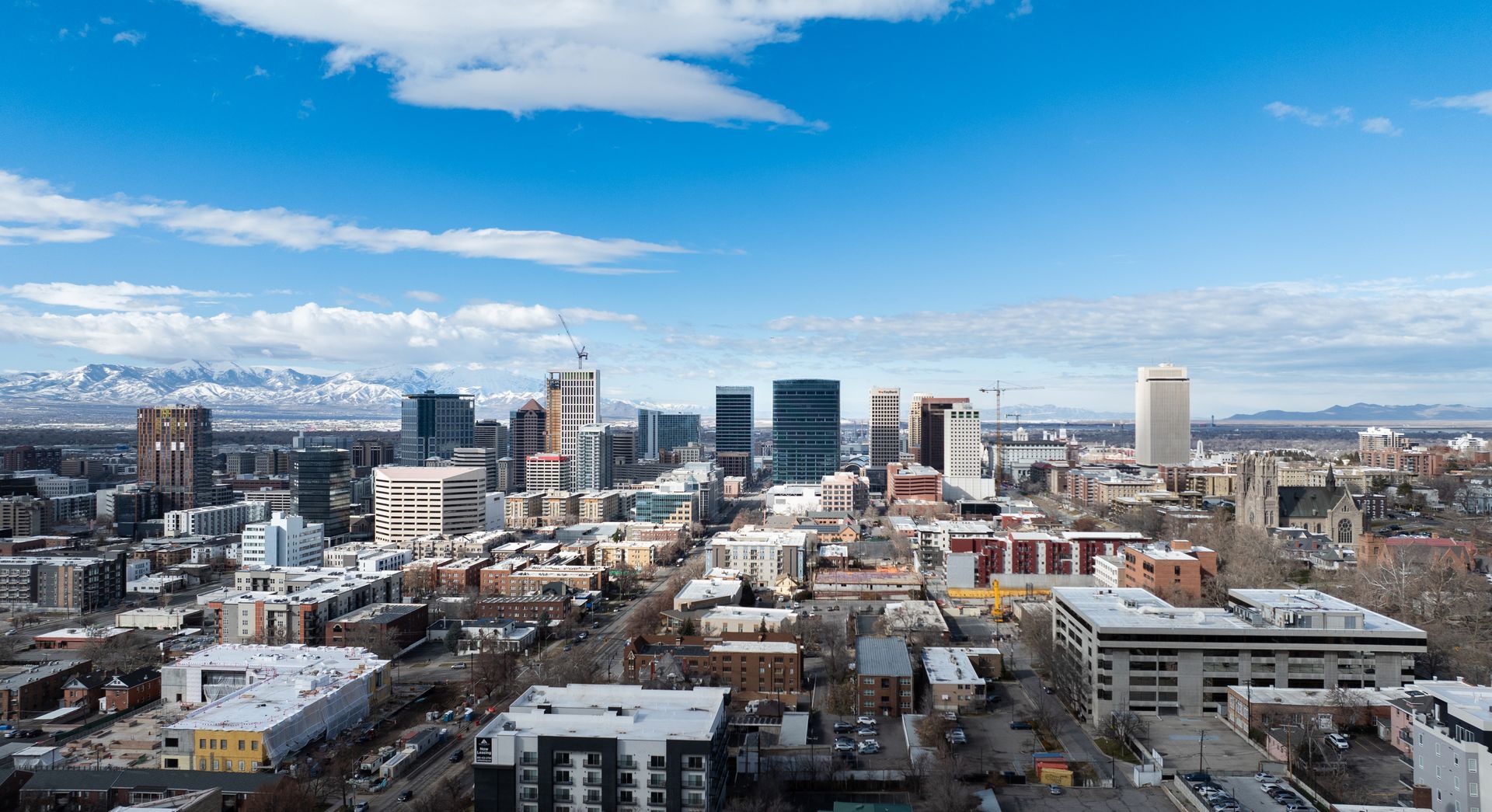
It's been more than 45 years (1978) since The Cars released their debut album highlighted by the wildly popular song Good Times Roll, but if there was ever a tune to sum up the general sentiment of local A/E/C professionals regarding Utah's 2024 Economic Outlook, Good Times Roll would be up there. "Our members are expecting another good year," said Joey Gilbert, President/CEO of the 650-member Associated General Contractors (AGC) of Utah. "For our contractors in both the building and highway markets, the outlook is good. Many still have decent backlogs to keep them busy through 2024 and in some cases, even 2025. The public sector is strong, and on the private side, owners are still investing in some big projects." Robert Spendlove, Chief Economist for Salt Lake-based Zions Bank, reported at the AGC's Economic Outlook meeting last November that commercial construction was up 1.6%, while Utah as a whole reported 2.5% growth overall, and believes both will continue to fare well in 2024. "Utah also has one of the lowest unemployment rates in the U.S. [2.5%]; when it gets too low, you get real struggles of labor shortages," he said. "It prevents companies from growing and is one of those defining economic characteristics of this past cycle. If we get above 4-5% we get nervous that it's a sign of a recessionary environment." Spendlove said tailwinds include strong consumer spending, a strong labor market, and an overall robust economic Intermountain West region, while headwinds could include a lack of new workers, government shutdowns, energy prices, and international uncertainty. Another bonus is that Utah remains one of the strongest states economically, regardless of what is happening nationally. "I would say uncomfortably optimistic," countered Dejan Eskic, Senior Research Fellow for the Kem Gardner Policy Institute at the University of Utah, citing a number of factors potentially slowing down the design and construction industry such as housing, labor, and material price fluctuations—basically the same post-Covid headwinds Utah-based firms have been battling the past couple of years. "On paper, we should have a decent economic year in Utah. Because it's an election year, it brings more optimism generally. Stock performance does better in an election year, jobs do better. You have to stick to those basics. Eskic has been with the Gardner Institute for eight years, including the past five in his current role, explained that some of the uncomfortableness facing the local economy stems from having virtually no labor pool in certain segments, including construction—which continues to face a dearth of skilled craftsmen in virtually all subcontractor trades. "We still have red flags," he said, noting concerns with still-high housing costs. "Maybe it's too early to call if we've cracked inflation. 2023 ended up way better than anybody expected—it was supposed to be a recession year, but the recession never came, and the labor market exceeded expectations. "I'm bullish on Utah," he added. "I look at the numbers and how we're going, and we're in a very strong growth pattern with the economy. Things will continue to expand." Indeed, despite nasty rising interest rates that put the brakes on some speculative development projects, Utah-based owners continued to plow ahead on projects, and by-and-large most market segments continued to see a healthy amount of activity as firms set about tackling healthy project backlogs.








